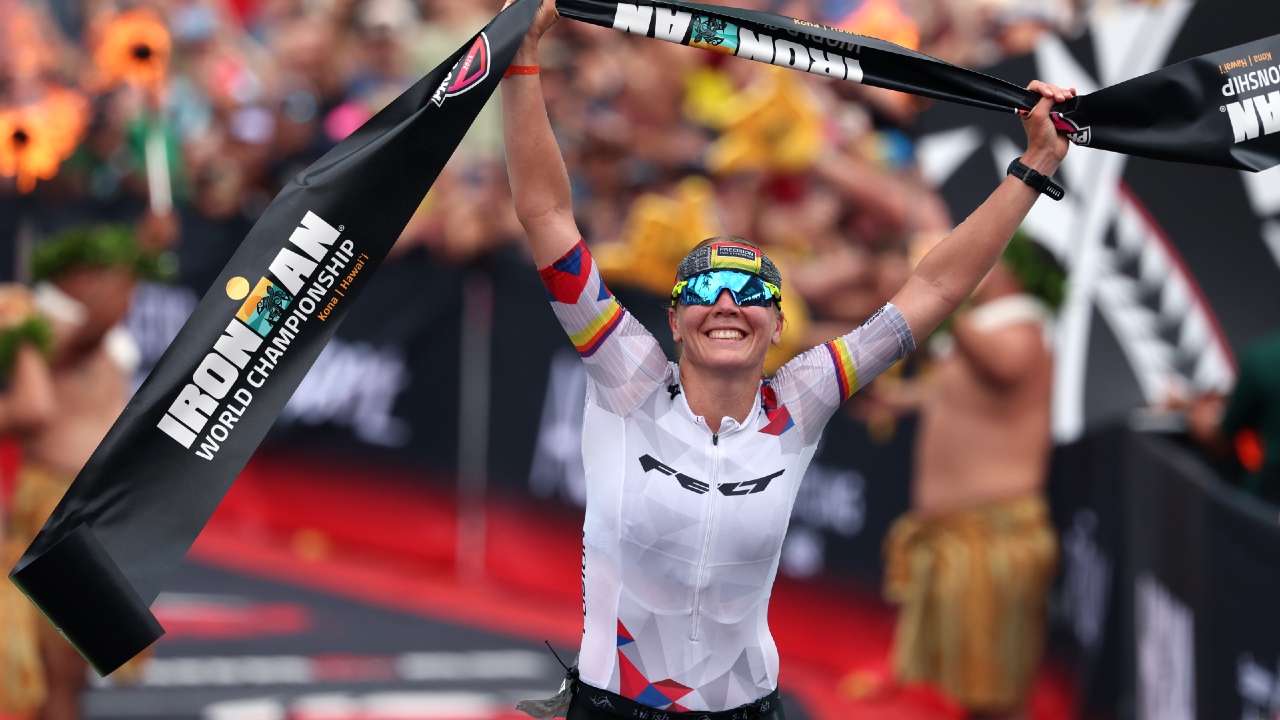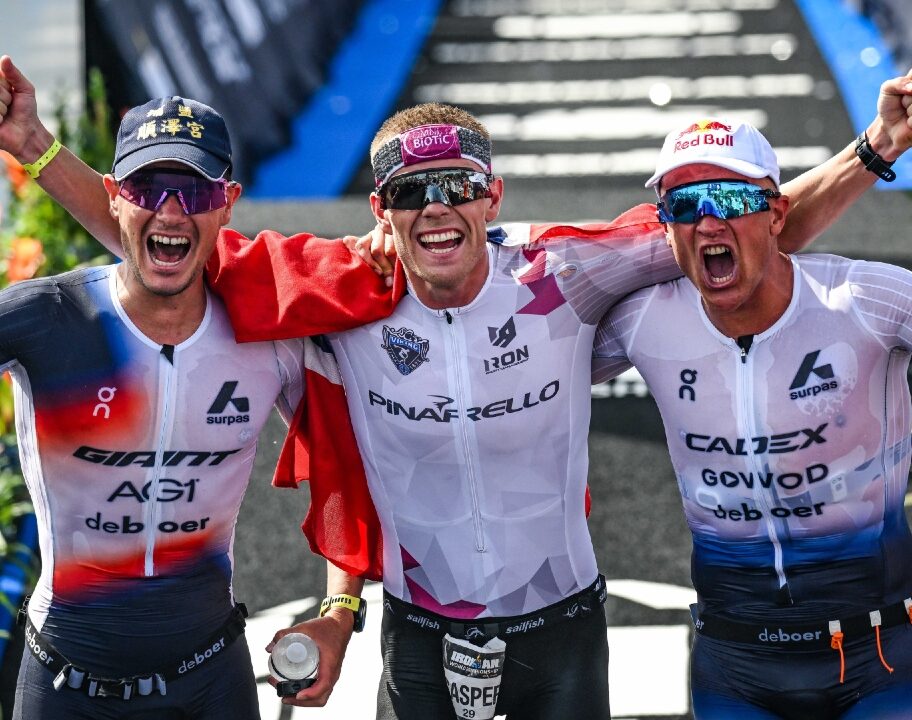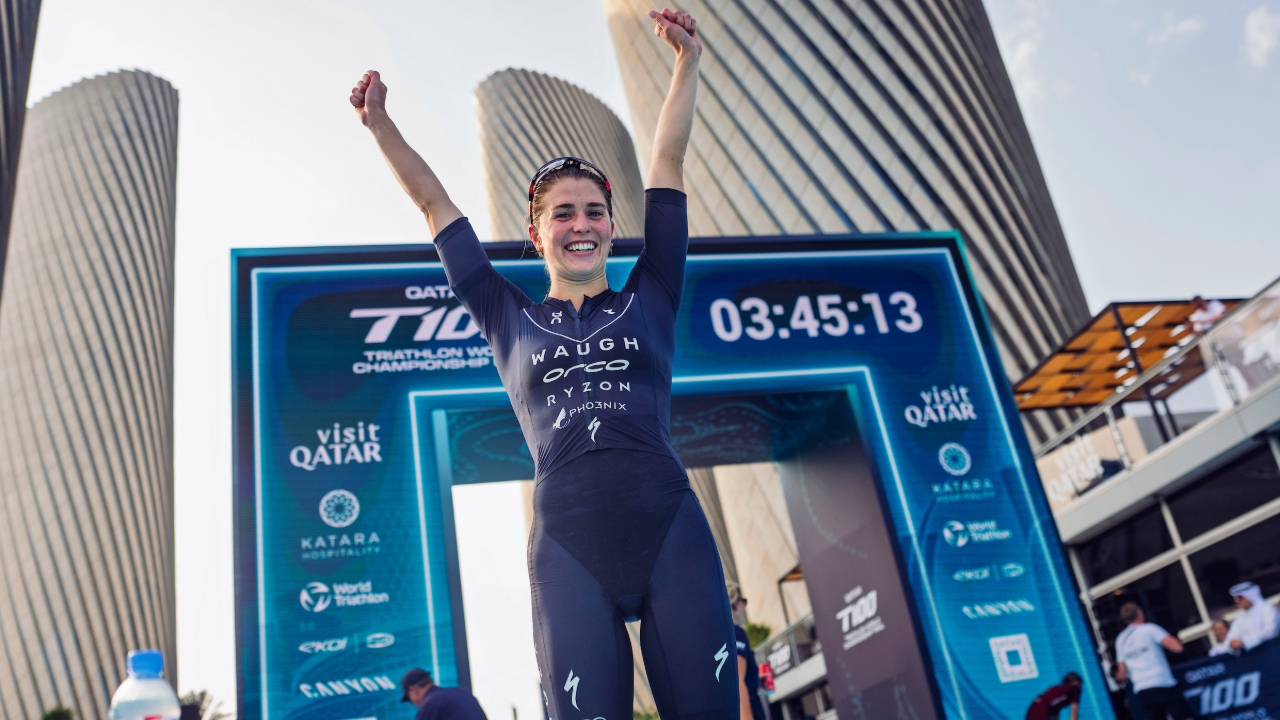Most age group triathletes start the sport with shorter distance racing. Dipping a toe into the world of swim-bike-run at a local pool-based super sprint triathlon, before taking on a few open water sprint distance races. But once those first few short course medals are hanging up with pride, and the triathlon addiction really kicks in. For many of us, our head is quickly turned by the lure of going long.
If you’ve got your eye on stepping up to middle distance racing, such as a half Ironman or a T100 age group race. You might be wondering how to adapt your training. To help you on your way, we caught up with two former Olympians, well-versed in stepping up from short course racing, to get their insights.
Australian pro triathlete Ashleigh Gentle has become a force to be reckoned with over the 100km distance, successfully stepping up to the longer race format after her short course career. And before his recent retirement, Olympic legend and double gold medallist Alistair Brownlee could frequently be found at the pointy end of long distance races – ending his career on a high with a podium at Dubai T100. Read Ashleigh and Alistair’s top tips for age-group triathletes looking to up their distance.
Increase your training volume in a way that’s sustainable
Something that can put a lot of age-group triathletes off going up to middle distance racing is concerns around the time commitment, and injury risk, that comes with training for a longer distance race.
But the increase in training volume doesn’t have to be as drastic as you might think, says Brownlee. “It is possible to train for most triathlon distances on lower hours, even if you’ve only got 10 hours in a week to train.” How many hours you’ll need to spend training really depends on your goals. Of course, if you want to be at the sharp end of the racing – you might need to commit a bit more time. “If you can commit more hours, you’re just going to be able to train to complete whatever distance you’re racing faster.”

But whether you’re looking to complete, or compete, the priority should always be on using your training time well. “I think for most people, it’s not necessarily about upping your volume to do more long distance,” says Alistair. “It’s about using the time that you have as effectively as you can in your week, so that you can consistently train for several months at a time.”
How to avoid injury when increasing your training volume
Increasing your training may increase your risk of getting injured – particularly with fatigue and overuse-related injuries. So how can you minimise the risk?
“Avoiding injury as you step up in distance is really all about considering sustainably what you can do in your week.”
Alistair’s insight is that sustainability is the most important thing. “If you are increasing your training volume, do it slowly and build up over weeks and months to avoid getting injured. People will tell you various formulas for doing that, but I think it’s very individual. It’s important to go at your own pace.”
Keep the aerobic sessions steady: How to maintain speed while building endurance
For those newer to triathlon, the main concern is going to be building enough endurance to be able to complete the required distances for a middle/half Ironman triathlon. But for age-groupers who’ve spent several years focusing on short course and developing speed – a concern when going long can be losing some of that fast twitch fire power. But you only have to look at some of the insanely fast paces the PROs hold in the middle and long distance races to see that it is possible to gain endurance, without completely sacrificing speed. The secret is training at the right intensity.
Increasing your training volume isn’t an automatic road to losing speed, says Alistair. “I don’t actually think you lose speed by doing more volume of training. The risk of losing speed comes when you do too much of your training volume at the ‘wrong’ intensities.”
When you start training for long distance triathlons, it’s important that your easy aerobic sessions are actually easy. “Those middle intensities don’t do a very good job at training your aerobic system. Plus, they fatigue you too much to really be able to do your speed sessions properly.”
The key is going easy on the aerobic efforts, so you can go hard on the quality, speed sessions and really get the most out of your training. “As long as you keep the aerobic sessions steady enough, and you still do regular speed work – you’ll be able to keep hold of your speed over the three triathlon disciplines.”
Nutrition and hydration are key for racing longer distances
Fuelling during a race is something that short course age-groupers – particularly those racing the sprint triathlon distance – might not have had to put too much thought into. But “fuelling is a huge factor” when you’re stepping up to the longer race distances, says Ashleigh Gentle.

“I hardly thought about nutrition in Olympic distance and that’s probably not a good thing. I’ve learned a lot over the last few years that would’ve helped me if I could turn back time!”
Use those longer, aerobic training sessions to practice fuelling – particularly on the bike. The nutrition you can stomach, and the quantities, is highly individual, and something that you’ll only fine tune through practice.
“Trying to practice the hydration and fuelling that you’ll use in the race during training is key,” says Ashleigh. “I’m pretty lucky that I’ve been able to stomach the nutrition pretty well. The first few races, I was probably still under fuelling a little bit. But then I really tried to push those boundaries to see what my stomach could handle.”
Having a fuelling strategy in place during your race – and sticking to it – is also important. When the heat is on, it can be easy to forget to take on fluids and nutrition. Even pros with as much experience as Gentle can get it wrong from time to time: “In Milwaukee [the 2023 PTO US Open], I don’t think I hit my nutrition targets at all. I was just in the hurt locker, and I didn’t ever find my rhythm. When that happens it’s easy, no matter how much experience you have, to forget to have the gel or the sip of drink.”
Practice makes perfect when it comes to dialling in your nutrition and hydration. But the more thought you put into it during training – the better chance you have of being able to perform at your best out on the race course.
Don’t be intimidated by the distance – ‘It goes by a lot quicker than you might think’
Finally, if the thought of racing over a distance which is so much longer than a sprint triathlon has you hesitating from hitting that ‘enter now’ button. Ashleigh Gentle shared some words of reassurance based on her own experience of racing the T100 series. “I would say try not to be intimidated by the distance. If you’ve only done a sprint or an Olympic, it’s more just a sense of pacing yourself.”
“You’ll quickly get a handle on the distance. If you’re able to sign up to more than one [100km] event, then you can ease into it. Pace yourself really well and see how it feels on the first one. If you feel quite comfortable and think that you held back more than you’d like, that’s when you can start pushing the boundaries to see how fast you can go.”
“Racing on these multi-lap courses, the distance goes by a lot quicker than you think.”
It’s important to remember that racing over longer distances means you’ll be working at a different level of intensity compared to short course racing.
Ready to take on a middle distance/half Ironman triathlon? Head over to our Let’s Race section to find your next event!











